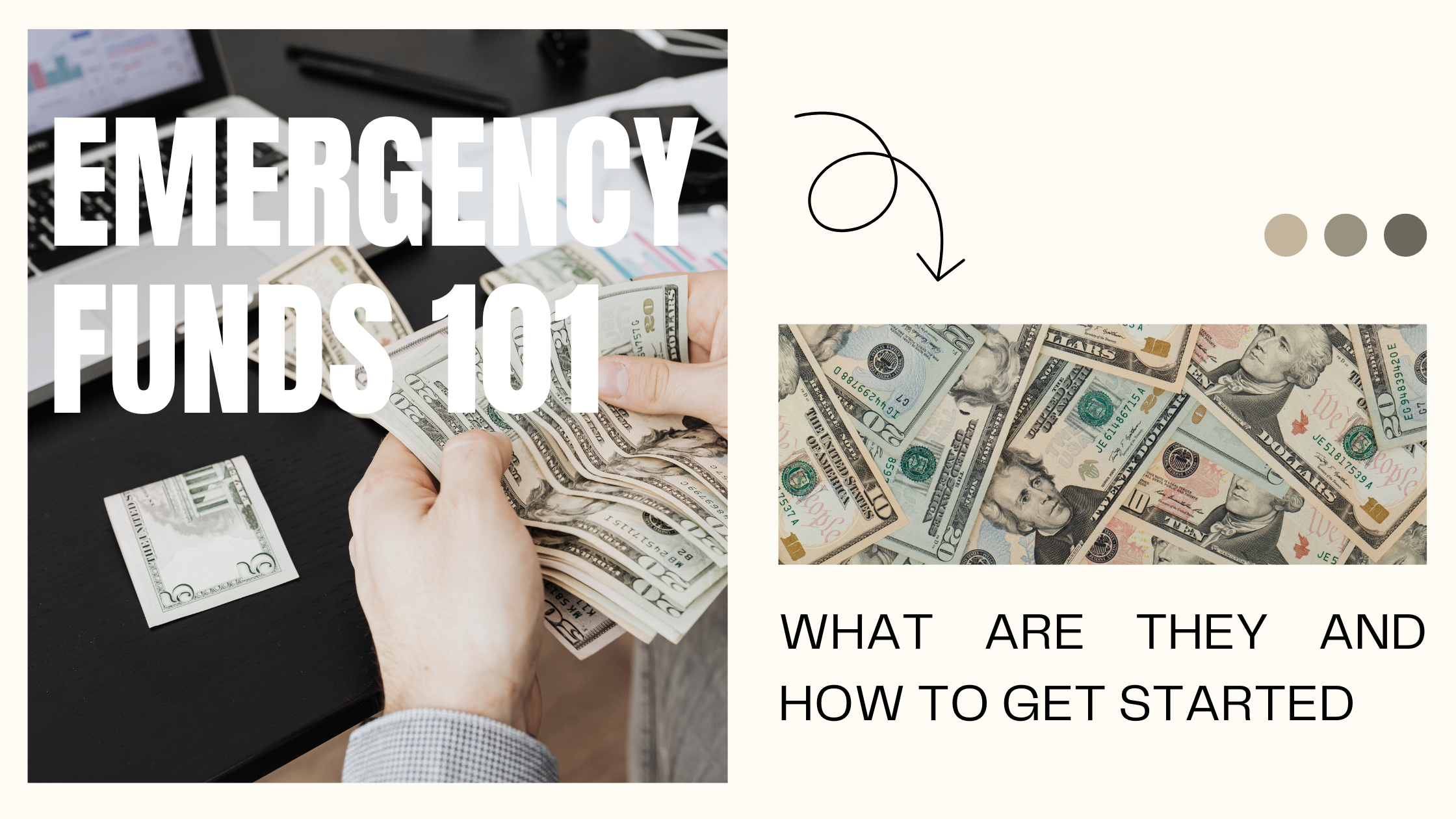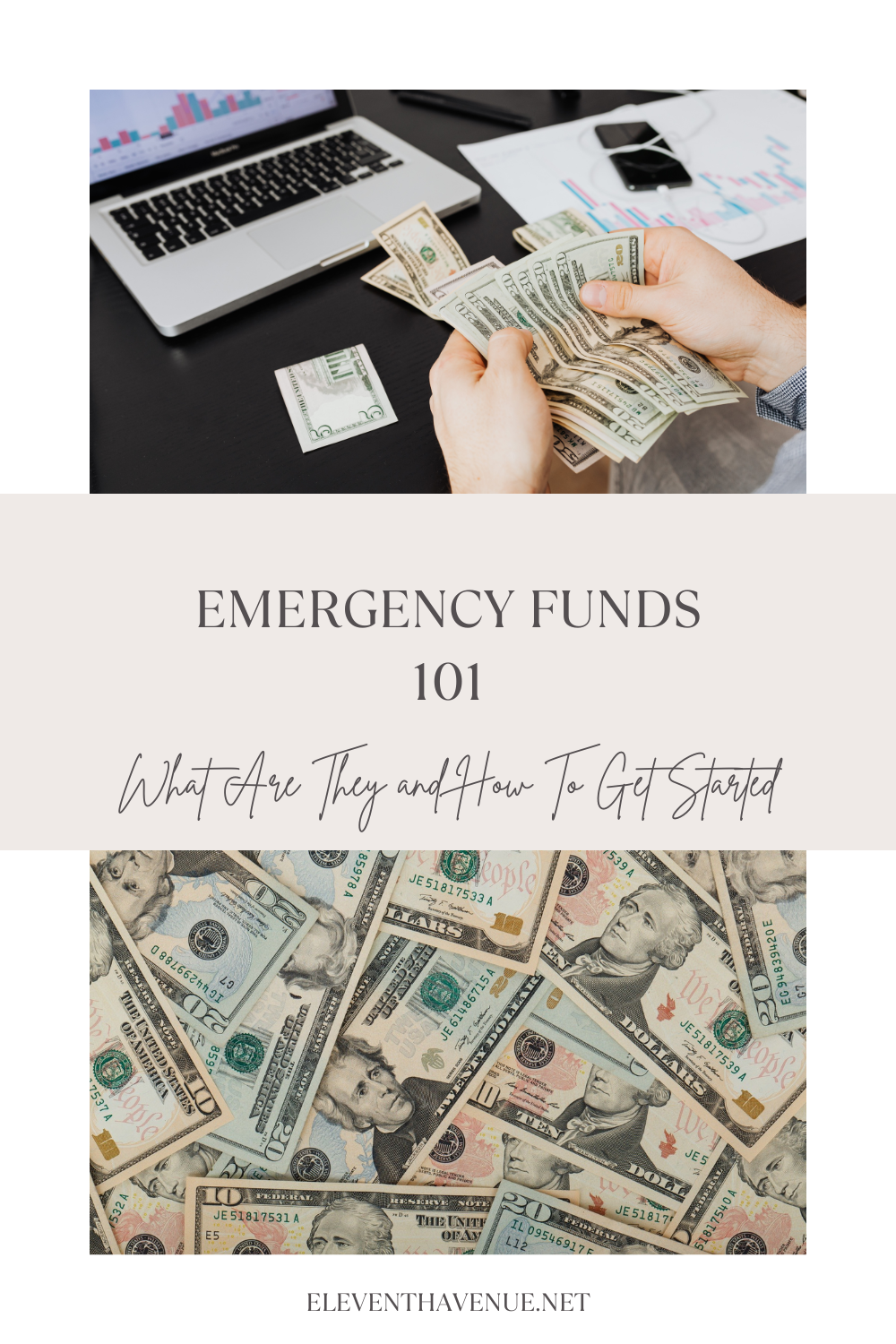Emergency Funds 101 – What Are They and How To Get Started

I got laid off in the middle of August, with only 2.5 months left on my maternity leave; the company shut down so it’s all within legal means. Despite seeing it coming, I felt a little weird receiving the notice. It is, after all, my first layoff.
The average person may feel stressed out right away. My friend got laid off back in April and was stressed out instantly. With an infant in tow, you would think I would be extra stressed out, knowing that I no longer have a job to return to, nor would I be eligible for employment insurance since I did not work during my year-long maternity leave.
Enter emergency funds (EF). My emergency funds are the only thing that’s kept me calm and not stressed out during the last few months of my maternity leave. It’s essentially saving my ass right now. It’s allowing me to fully enjoy my maternity leave before I start getting into the nitty-gritty of the job hunt again. I’ve never been more grateful to have an emergency fund than now.

So, what exactly are emergency funds, and how can you get started?
As defined by the Government of Canada, “an emergency fund is money you set aside to pay for unexpected expenses.” These unexpected expenses are typically a surprise that doesn’t give you much time to adjust your budget.
For example,
- Job loss or unable to work for some time
- Costly car repairs (or even home repairs)
- Emergency vet trips
- Unexpected plane tickets for a family emergency (I had to pay $4,000 for a one-way ticket during the peak of the COVID pandemic!)
How much do I need and where do I keep it?
A decade ago, $1,000 covered most expenses, but the reality is $1,000 is barely enough – take the average rent for a one-bedroom condo in Metro Vancouver… it’s $2,367!

The rule of thumb varies between 3, 6, and 12 months of your bare-bones necessities. I personally have 6 months of emergency funds, and that seems to be the new norm now. Those with a large family or a niche job may want to increase their amount.
How much do I need? Once you figure out how many months you want to save for, take a look at your bare-bones necessities. This includes your bills, minimum payments on any debts (the last thing you want is to incur late fees or be sent to collections!), mortgage/rent, and an average basic food budget (no luxury foods such as snacks, takeouts, organic foods, etc.). Once you have the total, multiply the total by the months you’re saving for.
For example, if my necessities total $3,000 per month, I would want to save $18,000, which is 6 months.
Where do I keep it? Your EF should be kept in an account that is easily accessible, ideally with a high interest rate. This could mean shopping around for a bank account that offers high interest rates but doesn’t charge you any inactivity or monthly fees (in case you go 6-12 months without incurring any emergencies which do happen!).
The high interest rate can help you get closer to your savings goal quickly, and once you reach your savings, any extra income from compound interest can supplement your savings since we all know inflation can raise prices every year!
For me, I keep my EF in an investment account with low risk. It’s not easily accessible however, I use my credit card or line of credit to cover any emergencies since withdrawing from my investment account can take anywhere from 3-7 business days. The reason I keep it as an investment account is because the dividends I receive are higher than my standard high-yield savings account, and when I use my credit card to pay the emergency, it racks up my points.
A CREDIT CARD IS NOT YOUR EMERGENCY FUND!!! I use my CC to collect points in emergencies because I have the cash to pay it off (even if it takes 3 to 7 business days to withdraw from my investment account).
How do I fund my emergency fund?
How soon do you want to have a fully funded emergency fund? Whatever you choose, take that number and divide it by the total amount of money you need. Working from the previous example, if I need to save $18,000, and want a fully funded EF in 8 months, I need to put away $2,250 per month.
However, this highly depends on your budget and how much you can put away. Getting a fully funded emergency fund in a few months is unachievable for many so don’t worry if you need more time to get it fully funded. The sooner the better.
What also helps is the interest you receive from putting money away in a high-yield savings account. Another way to fund your EF quickly is by putting in any additional money you receive such as bonuses, cashback, monetary gifts, tax refunds, etc. Although it’s fun to spend the extra money elsewhere, sacrificing for a few months will allow you to fully fund your EF quickly.
Regardless, putting any money aside is great. Even if it’s only $5. It all adds up when you’re trying to build an emergency fund. When funding my EF, I set up an automatic transfer of $200 every payday. This forced me to put away money before I could even think about how to use it, and then I threw any additional money in every pay period. Try setting up an automatic transfer to set it and forget it.

What if I’m in debt?
I’m a big believer in being debt-free and that there is no such thing as “good” or “bad” debt. A mortgage is still debt, honey!
That being said, I still put money aside when I had high-interest debt. Perhaps, not as much as I would’ve liked, but as I said before, every bit counts. Having an emergency fund is important, even if you’re climbing out of debt. Without an emergency fund, your hard work can be diminished instantly if you need to rack up debt to cover an emergency.
I honestly recommend saving a minimum of $1,000 as your emergency fund and focusing on getting rid of high-interest debts such as credit cards before allocating more money to your EF whilst paying off low-interest debts.
I had an emergency. Now what?
Simple. Replenish what you took out. If I took out $600 for an emergency, my priority would be to replenish the $600 as soon as possible with my next pay, which may mean temporarily adjusting my budget.
I fully funded my EF. What now?
One of the biggest frustrations I see often with emergency funds is that once you have it fully funded… an emergency comes along, wiping it clean. All your hard work is gone in a flash, but at least you didn’t incur any debt from your emergency!
This is NOT necessary but it helps me manage my funds and expectations better. Instead of having one emergency fund to cover a variety of emergencies, I actually set up three separate EFs so I don’t tap into my “main” EF. I set up a pet emergency fund (of $20,000), a car maintenance/repair fund (of $5,000), and a rental maintenance/repair fund (of $5,000). This way, I can easily pull money out without feeling like my emergency funds are disappearing, letting my primary emergency funds cover other emergencies that may not arise often.
The future of your EF
You may not experience an emergency for months, maybe even for the entire year. Congrats! Despite fully funding your EF, remember to contribute an extra thousand or two into it every year to help keep up with the cost of living. A reason why a high-interest savings account is great is because of the compound interest, which can help increase your funds and protect you from inflation.
Don’t get too comfortable because you’ve fully funded your emergency funds. Be mindful of inflation and life changes such as having kids. A fully funded EF allows you to slowly contribute instead of aggressively contributing, but never to stop contributing.
And a reminder, an emergency fund is used only for emergencies. If I had $1,000 for emergencies and a credit debt of $1,200, I wouldn’t withdraw from my emergency fund. It can be tempting to withdraw when times are tough, but consider if your situation is truly an emergency or if you simply want something. My maternity leave ends in November; I don’t touch my emergency funds during this time. I would only touch my funds if I could not land a job before my last maternity pay hits the bank.









